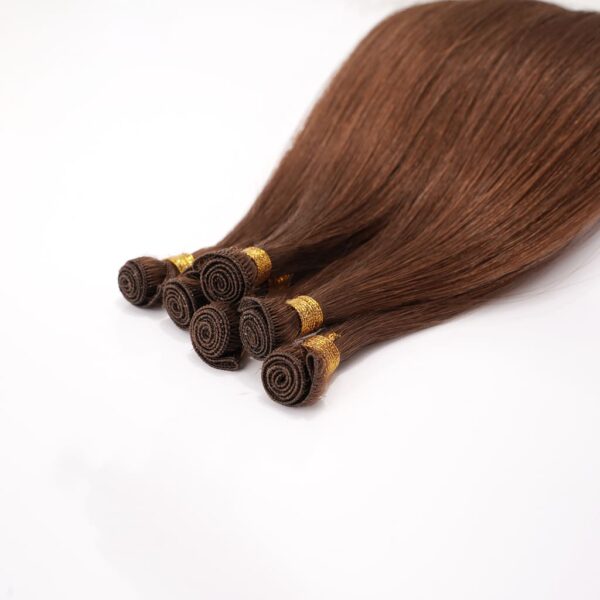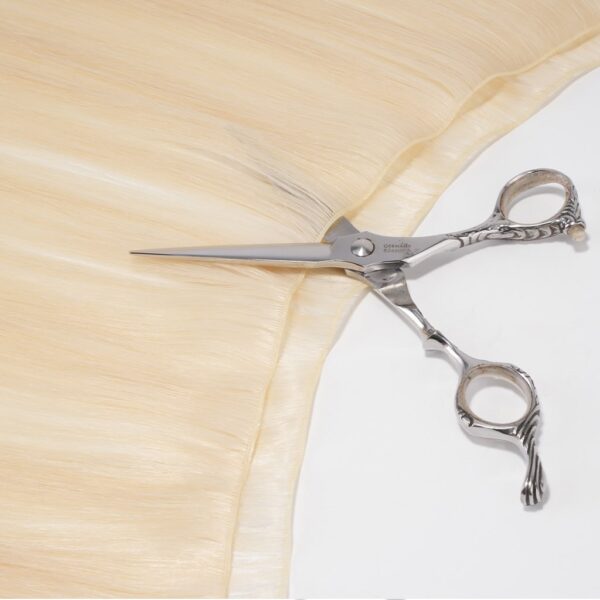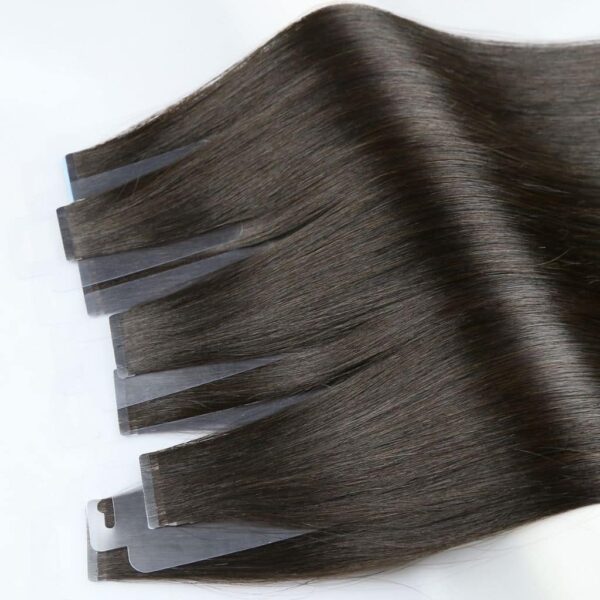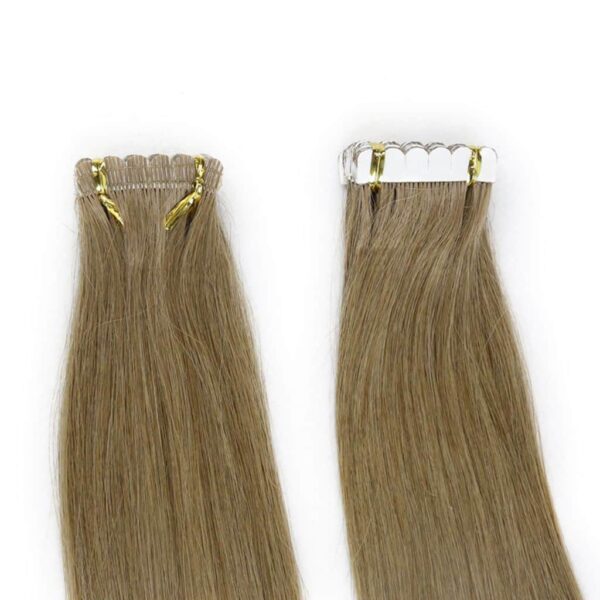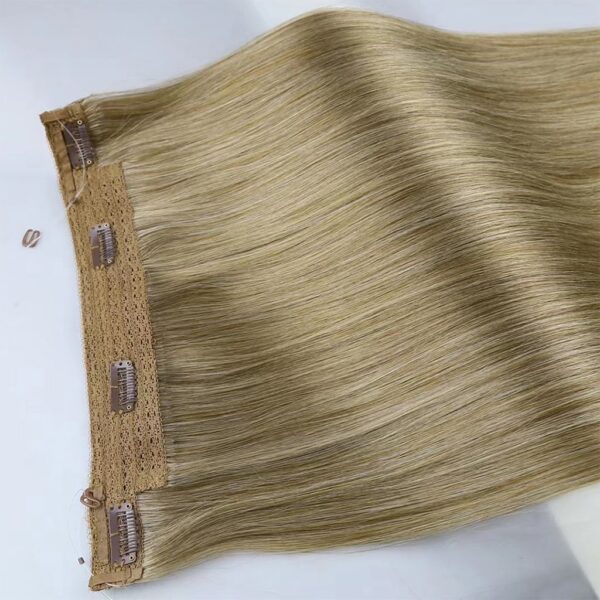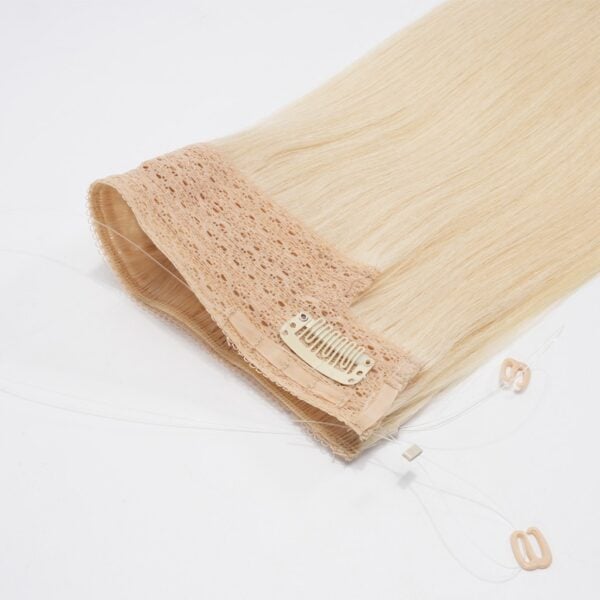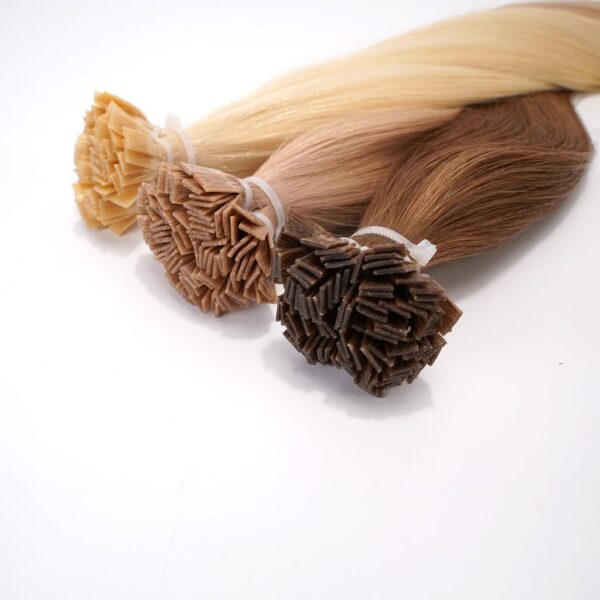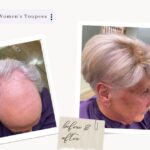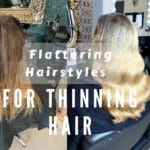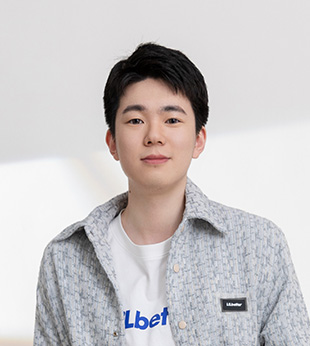
Hair extension wearers with thin or fine hair are often indoctrinated on choosing the best hair extensions for their hair types.
Indeed, specific hair extensions can damage the wearer’s thin or fine hair, leading to more severe hair loss. Pulling or tugging on natural hair and using harmful chemicals must be avoided.
Meanwhile, wearing the so-called invisible hair extensions for thin hair and fine hair is equally important. The wearer’s natural hair must be able to hide hair extension bonds effectively so they don’t easily poke out and expose the wearer’s secret tricks.
This post addresses the most crucial aspects of the best hair extensions for thin hair and fine hair. Go through it, and you will know how to choose and install the best hair extensions for your customers with thin or fine hair.
- 1. What is the difference between thin hair and fine hair?
- 2. What do we need to consider when treating thin or fine hair?
- 3. Hair Extensions for Thin Hair and Fine Hair Are Similar
- 4. What Should We Consider When We Choose the Best Hair Extensions for Thin Hair and Fine Hair?
- 5. The best hair extensions for thin or fine hair
- 6. Hair extensions are suitable for thin or fine hair but must be appropriately applied
- 7. Tips and Tricks for Hiding Hair Extensions for Fine or Thin Hair
- Related: Hair Extension Lengths Guide
- Related: Different Types of Hair Extensions
- Related: What Are the Least Damaging Hair Extensions?
What is the difference between thin hair and fine hair?
Though both appear thin on the wearer’s head, fine hair and thin hair are slightly different by definition.
- Fine hair means each strand is smaller in diameter.
Fine hair describes the texture of our hair, which is classified in terms of the diameter, width, or circumference of hair strands.

Your client’s hair strands will be smaller in diameter if your client has fine hair. In contrast, coarse hair generally has a larger diameter.
So, fine hair may or may not have anything to do with hair loss; the customer may have a full head of natural hair, but the hair feels soft and not so thick as you press it down against the scalp.
Since each strand of hair is thin and soft, it may be damaged if not appropriately styled.
- Thin Hair: Thin in Volume
As its name well implies, thin hair is about hair density. There are thousands of reasons for hair loss. Still, our focus here is on its definition: that thin hair means there’s not much hair on the head; a person may have strong, spiky hair, but her hair is thin because there’s not much on her head.
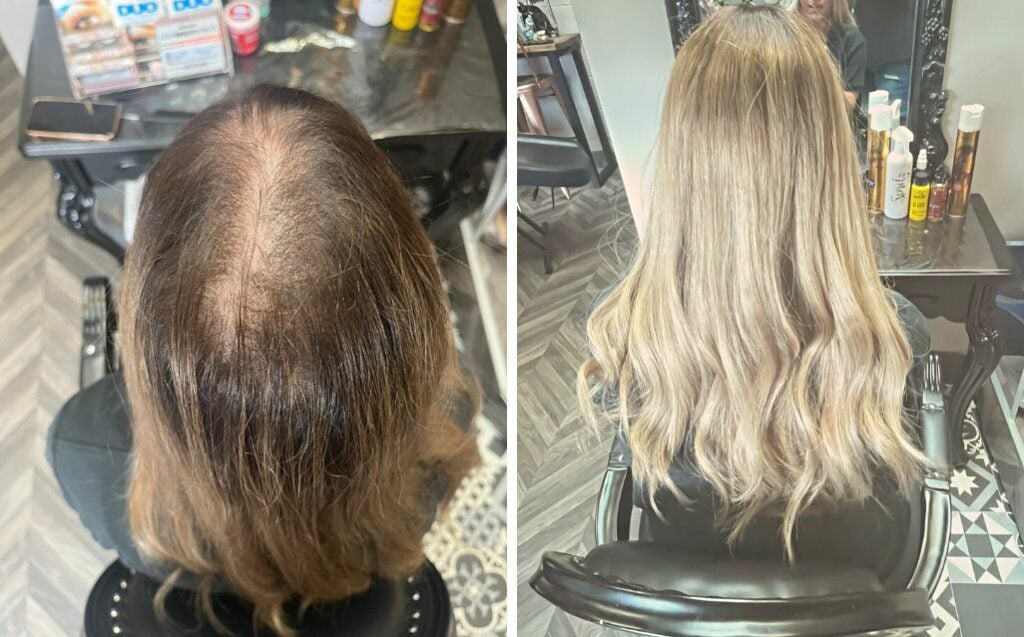
What do we need to consider when treating thin or fine hair?
As we discussed earlier, thin hair is defined by its density, indicating a low volume. On the other hand, fine hair refers to a hair texture characterized by its softness, delicacy, and smaller diameter. However, due to its small diameter, fine hair generally appears thin on a person’s head, just like thin hair.
- Fine hair: avoid damage to the hair strands
With that in mind, when we style or put hair extensions on fine hair, we ensure they don’t easily break or dehydrate the natural hair, causing permanent damage or malnutrition.
- Thin hair: avoid tension to the scalp
With thin hair, as the density is already low and the wearer may have been losing hair for some time already, we need to ensure she doesn’t lose more hair henceforth. Thus, we must avoid hair extensions that firmly pull or tug against the wearer’s scalp so that not much hair will get pulled off.
- Invisibility: invisible hair extensions for thin hair and fine hair
Ensuring the wearer’s natural hair effectively covers the extensions is crucial when installing hair extensions. Understandably, hair extension wearers worldwide prefer their extensions to go unnoticed. That’s why invisible hair extensions for thin hair are essential. Using small bonds or individual bunch-by-bunch hair extensions is a great starting point.
Hair Extensions for Thin Hair and Fine Hair Are Similar
Thin hair and fine hair are different in definition. Still, when we put hair extensions on them, we treat them similarly. Thin or fine hair is equally delicate and fragile, so we usually take similar precautions to avoid breakage, heat, tugs, pulls, etc. But with thin hair, we are extra cautious that the hair extensions don’t cause the wearer to lose more hair.
One thing equally important is that the hair extensions we choose for thin or fine hair must be invisible. As the wearer’s hair is thin, it must be able to hide hair extensions in it effectively. Thus, invisible hair extensions for thin hair are highly essential.
What Should We Consider When We Choose the Best Hair Extensions for Thin Hair and Fine Hair?
Keen on finding the best types of hair extensions for thin hair or fine hair? What are the healthiest extensions for thin hair? As mentioned, when putting hair extensions on thin or fine hair, we must avoid breaking the hair; tugging and pulling against the scalp should be avoided.
- Go with the lightweight.
With that in mind, we suggest using lighter hair extensions that are not too heavy to avoid pulling and tugging on the natural hair. Hand-tied wefts are a good example.
- Avoid heat and chemicals.
We suggest using heat- and chemical-free hair extensions so they don’t cause dehydration or malnutrition. For example, the glue some fusion hair extensions use may harm the wearer’s natural hair; we must avoid this.
- Choose Invisible Hair Extensions for Thin Hair
Invisible hair extensions blend well with the wearer’s thin natural hair. They are not physically invisible. By calling them invisible, we mean the wearer’s natural hair can hide them well. If the wearer’s natural hair is too thin, theoretically, it can hardly conceal the hair extensions. With this in mind, human hair extensions with small, light bonds or thin wefts are highly recommended.
- Always consult before choosing hair extensions.
Before giving more examples, we must ensure that your customer talks to a hair specialist or qualified hairstylist before choosing hair extensions. They must get a hair technician who knows how hair extensions work and whether the wearer’s hair is suitable for wearing hair extensions.
Equally important, the hair technician must determine the wearer’s proper hair structure for the best hair extension method. Last but not least, the hairstylist needs to know everything about hair extensions and how to appropriately put them on the customer’s head and remove them.
The best hair extensions for thin or fine hair
We have compiled a list of hair extensions considered the least damaging hair extensions for thin hair and fine hair and provided a detailed explanation for each.
Hand-tied hair extensions
The best kind of hair extensions for thin or fine hair are hand-tied, lightweight, and chemical-free; whatever attributes are required of a hair extension for those with fine or thin hair, hand-tied hair extensions have them all.
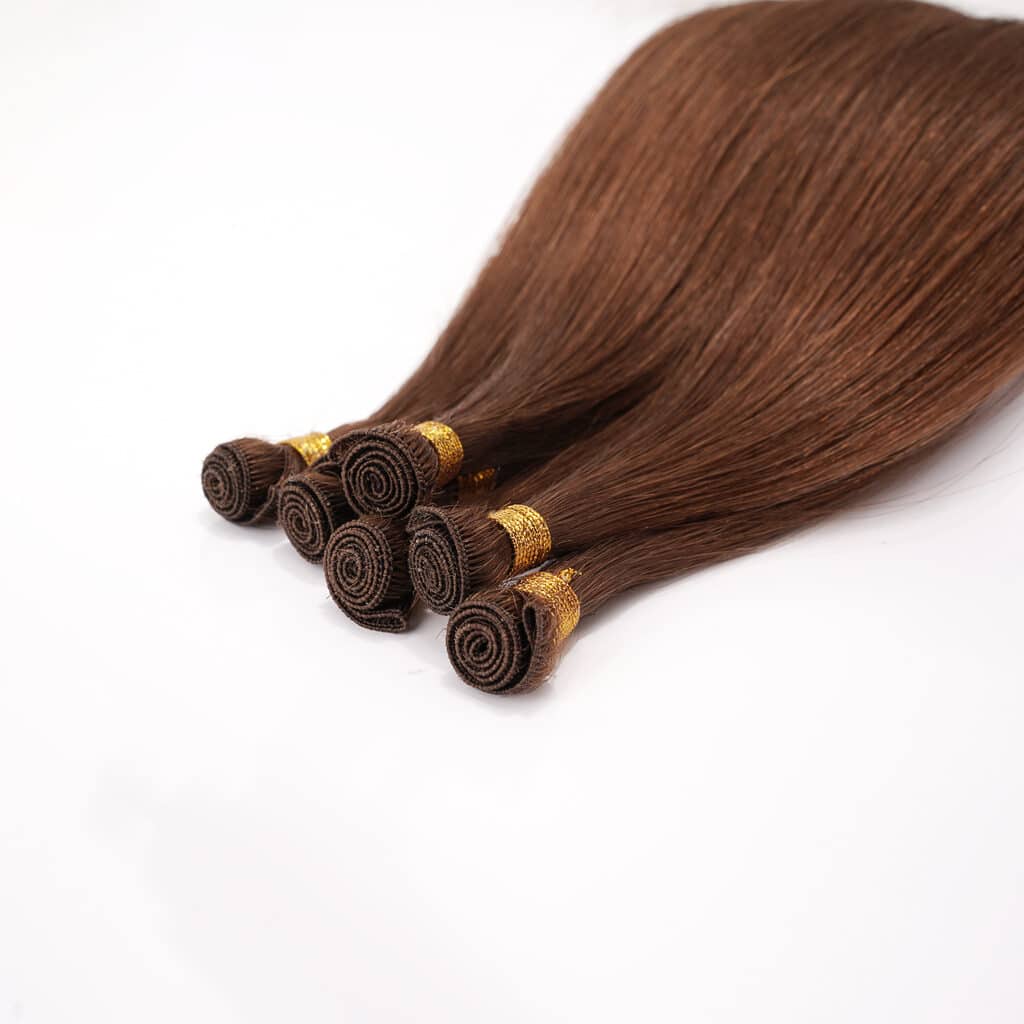
With hand-tied hair extensions, a stylist slips tiny silicone beads onto strands of hair and then manually threads cotton or nylon thread or wefts of hair extensions through the bead. That also makes them one of the healthiest extensions for thin hair.
Hand-tied weft vs. machine-weft
Compared to machine-weft hair extensions, hand-tied hair extensions or thin weft hair extensions are much thinner and less visible.

The wearer’s natural hair is less stressed using hand-tied hair extensions; the thin weft hair extensions mix perfectly with the wearer’s natural hair, making the beads and connectors absolutely undetectable.
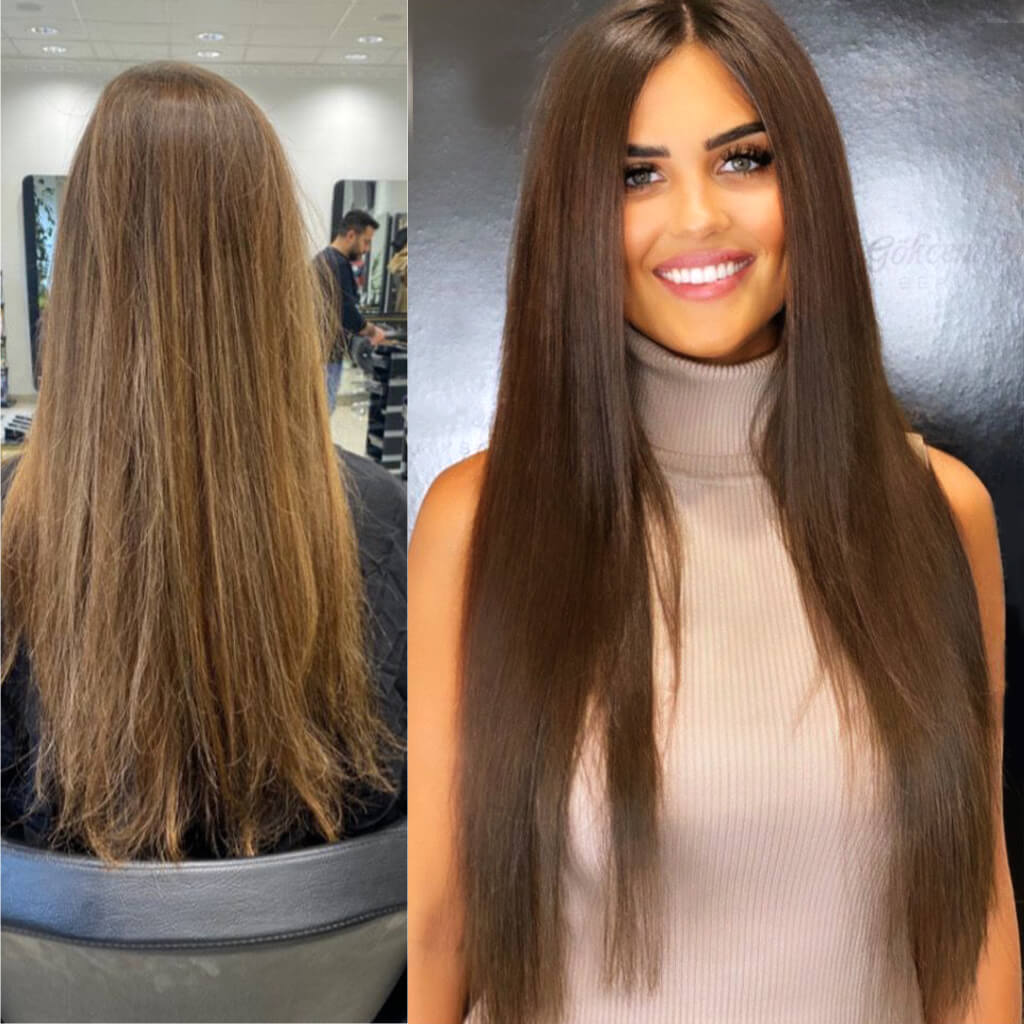
Hand-tied hair extensions can lay flat on the scalp and can be applied to both straight and wavy hair.
Benefits of hand-tied hair extensions
Hand-tied hair extensions are the front-runner of all hair extensions that all hairstylists worldwide recommend wearing for thin or fine-haired wearers.
On thin hair, hand-tied extensions can add the much-desired volume.
Hand-tied hair extensions can be beneficial for thin hair if the hair is naturally thin and does not have anything to do with underlying hair loss issues.
Remember that if the wearer’s natural hair is fragile, wefts are unlikely to cover it. So preferably, the hair extensions should mimic the wearer’s natural hair in texture and colors to mix well, and others won’t be able to tell the wearer is wearing hair extensions.
The natural hair may become stressed if the extensions are too heavy, ultimately providing an undesirable final appearance.
But hand-tied extensions are generally light and only one layer along the weft so that they won’t cause much stress to the wearer’s natural hair.
Shop hand-tied weft
Genius Weft Hair Extensions
Genius weft hair extensions include all the best attributes of the machine weft extensions and hand-tied wefts. 100% Remy human hair is sewn on a narrow strip, making a very light, thin hair weft.
As the wefts are super lightweight, they will never pull on the wearer’s natural hair, causing further hair loss. Wearers can’t even feel them on their heads.
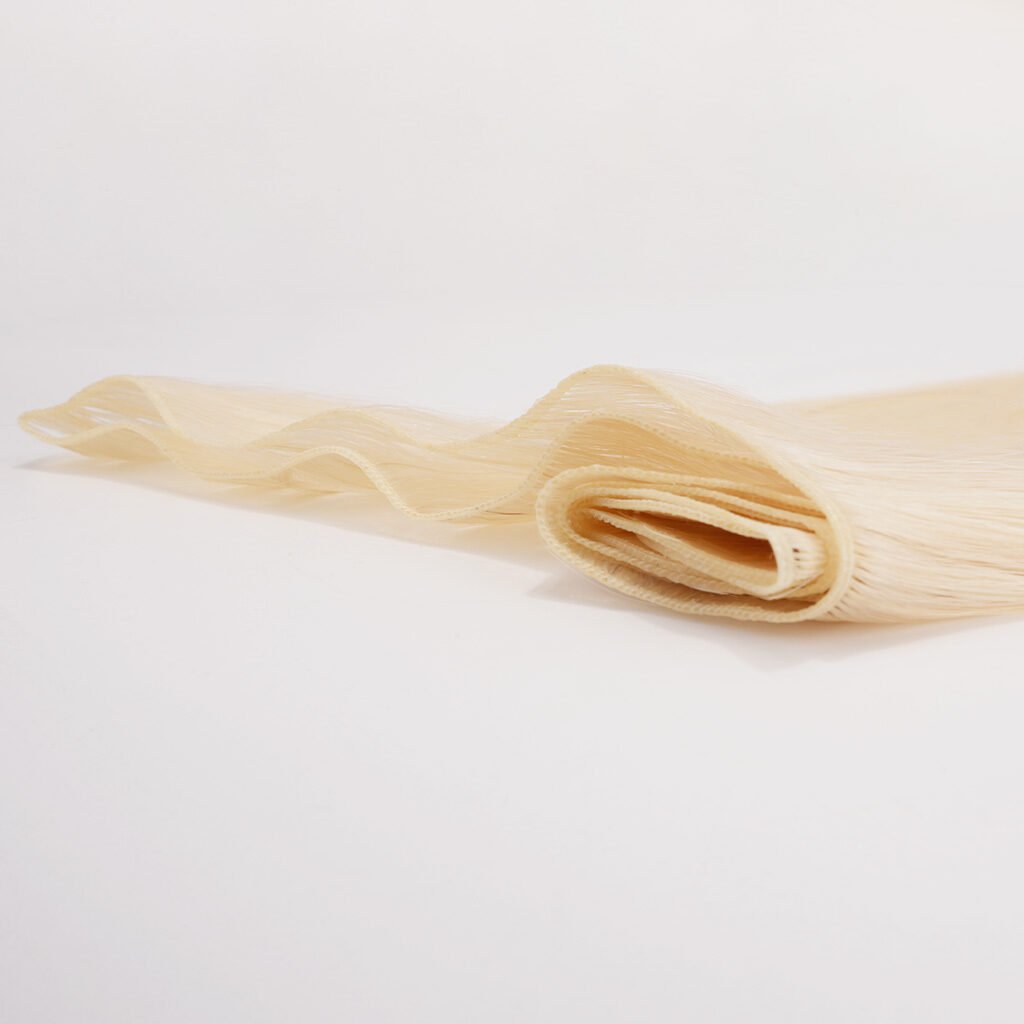
Genius wefts are also one of the best invisible hair extensions for thin hair. The wefts are so thin and lightweight, and their hair is silky smooth; they hide very well in the wearer’s natural hair. No one will ever notice them.
Plus, you can cut the Genius wefts into smaller pieces, like machine wefts, and apply them where needed on the head. The smaller pieces are even lighter and easier to hide in the wearer’s natural hair.

Benefits of Genius Weft Hair Extensions
Here, let’s list all the outstanding features of the Genius Wefts.
- Thin and Lightweight
Genius wefts are very thin and lightweight and will never pull on the wearer’s natural hair, keeping the wearer’s natural hair intact and causing no extra hair loss.
- Cuttable and Invisible
Genius wefts are thin and hide well in the wearer’s natural hair; they can also be cut into smaller pieces and installed where needed in the wearer’s natural hair.
Shop hand-tied weft
Invisible Tape in Hair Extensions
Similar to but better than traditional tape-in hair extensions, invisible tape in hair extensions boasts one-and-a-half tapes hidden behind the wearer’s natural hair without being seen. That makes the invisible tape in hair extensions one of the best invisible hair extensions for thin hair.
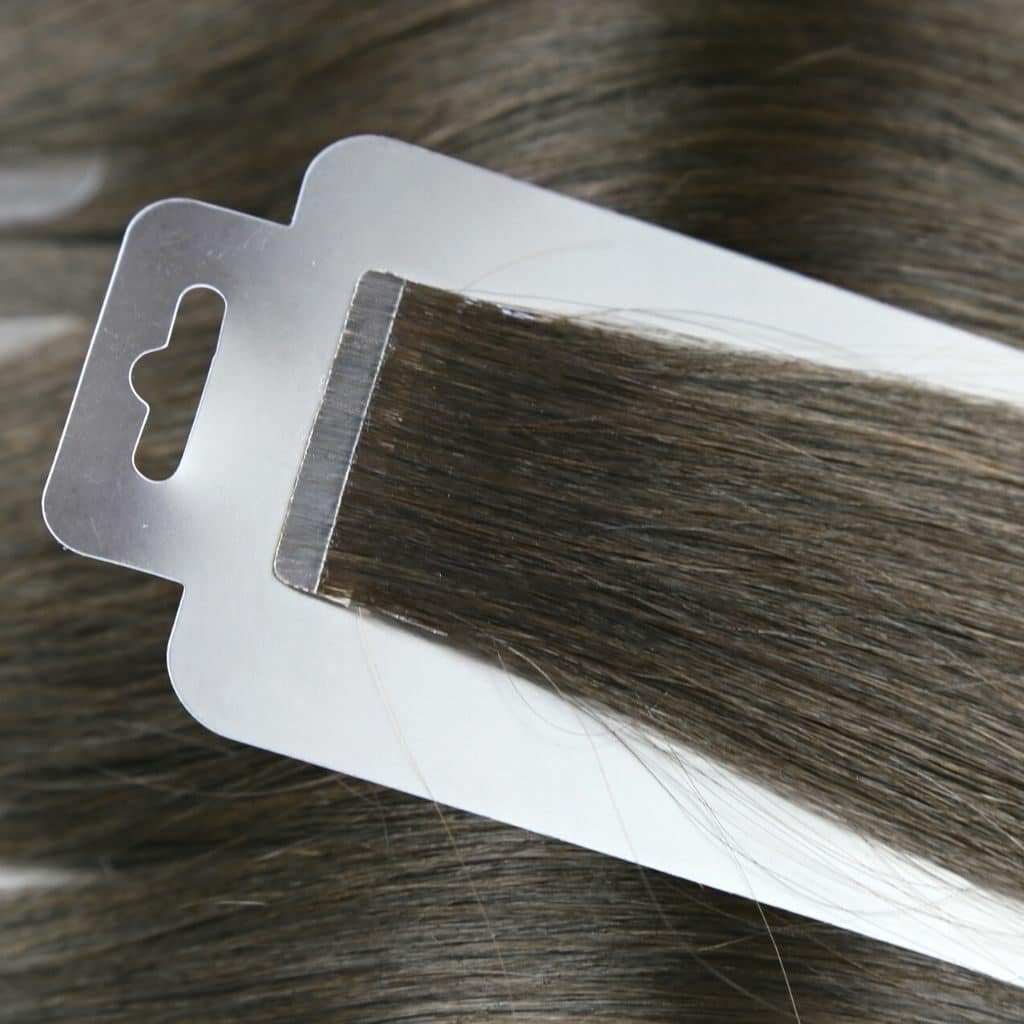
Benefits of Invisible Tape in Hair Extensions
Invisible tape in hair extensions by New Times Hair has some unique qualities regarding undetectability and friendliness toward natural hair.
- Invisible Bonds
One and a half tapes are used, making the bond hide behind the wearer’s natural hair for a natural and seamless blend.
- Human Hair Used
100% quality Remy human hair from single donors is used for all our invisible tape in hair extensions. The hair never tangles or mats; it can last 1-2 years with proper care.
- Chemical-Free Tape
American white tape is the mounting tape, which is harmless to the wearer’s natural hair.
Shop mini tape hair extensions
Mini Tape in Hair Extensions
Upgraded from traditional tape in hair extensions, mini tape in hair extensions have tapes with many folds. You can break one big piece of tape into smaller pieces by the folds or fold it to wrap around a tiny bunch of natural hair.
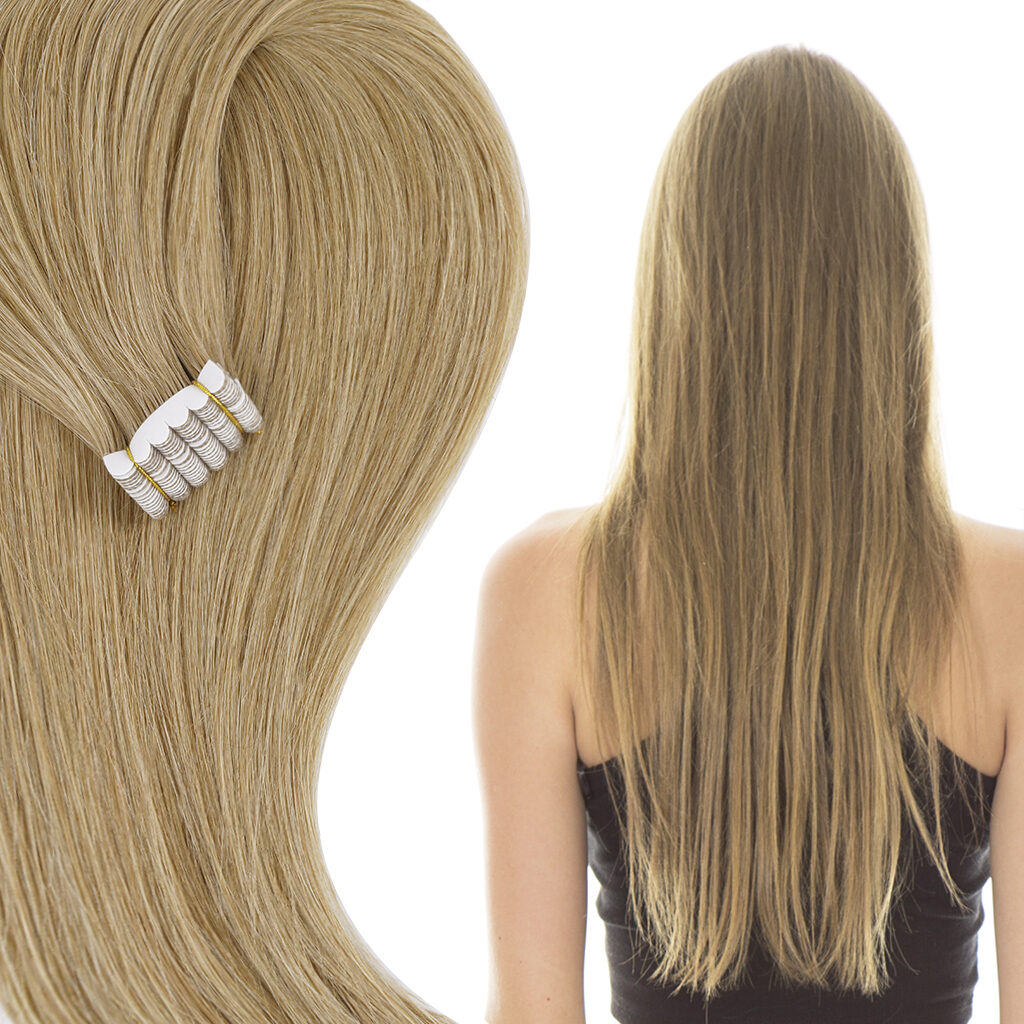
Due to their lightweight nature, mini tape in hair extensions is also considered one of the best invisible hair extensions for thin hair. As the tape can be cut into smaller pieces, every small piece will hardly generate any weight pulling hard on the wearer’s natural hair. The wearer’s natural hair will hide the tiny tapes perfectly, making them undetectable.
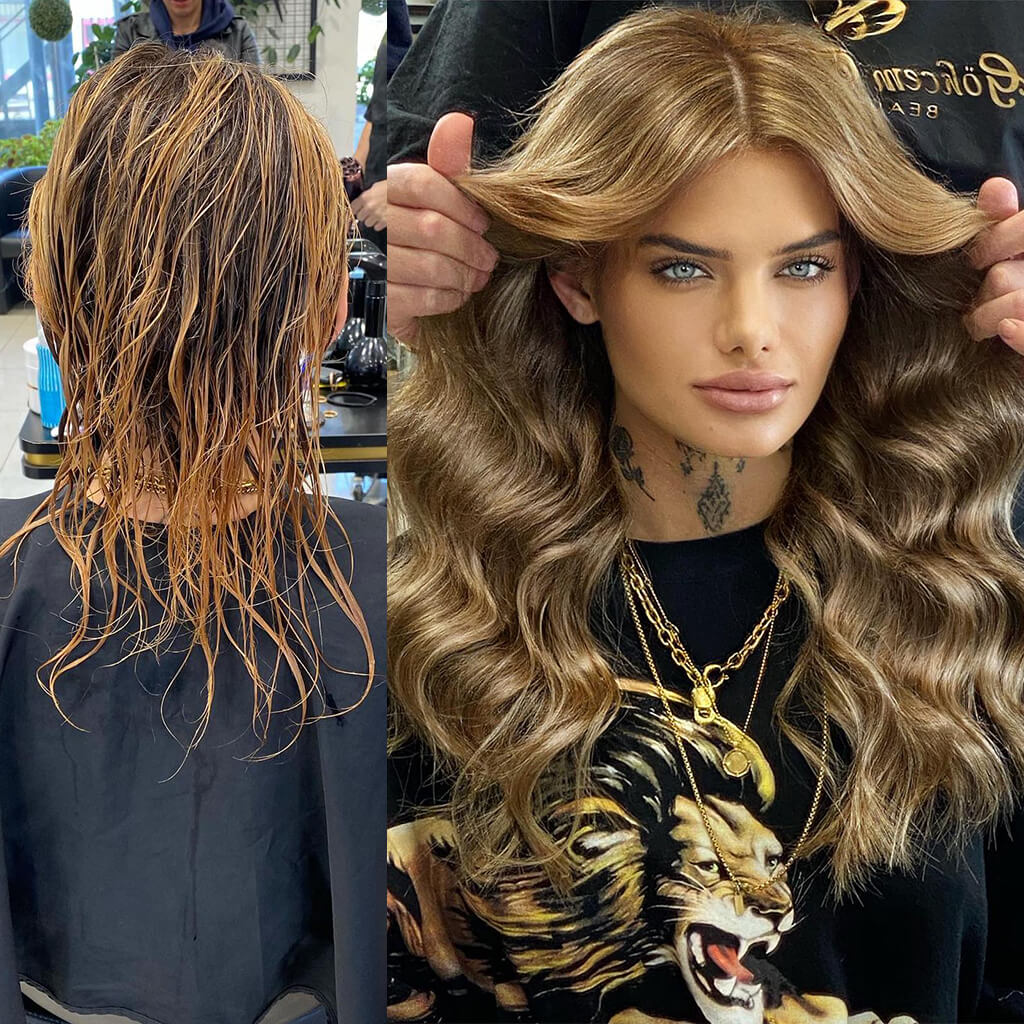
Benefits of Mini Tape in Hair Extensions
Mini tape in hair extensions is a tape with folds on the tape. That allows it to be broken into mini tape-ins.
- Lightweight
Mini tape in hair extension tapes have multiple folds for them to be broken into tiny tape in hair extensions. They carry minimal weight and will never pull hard on the wearer’s natural hair.
- Invisible
After being cut into tiny pieces, the tapes can hide perfectly well in the wearer’s thin hair; others will never see them.
- Chemical-Free Tapes
American chemical-free white tape is used for the mini tape in hair extensions. As the tape has no harmful chemicals, it will never damage the wearer’s natural hair or cause more severe hair loss.
Shop mini tape hair extensions
Halo Hair Extensions
How good are halo hair extensions for thin hair? Unlike many other hair extensions (even lightweight) that hang on the wearer’s hair strands, halo hair extensions sit on the wearer’s crown like a tiara, so the hair extension’s weight doesn’t pull against the wearer’s natural hair and scalp. Halo hair extensions are one of the least damaging hair extensions for thin hair.

The wearer’s natural hair can cover the halo extensions’ clear wire, allowing it to be buried deep into the wearer’s natural hair, and the whole hair extension mixed perfectly with her natural hair, making the hair extension undetectable.
The wearer can select the length, style, and color of her hair extension with this option, and it will be delivered as a single piece fastened to a clear wire.
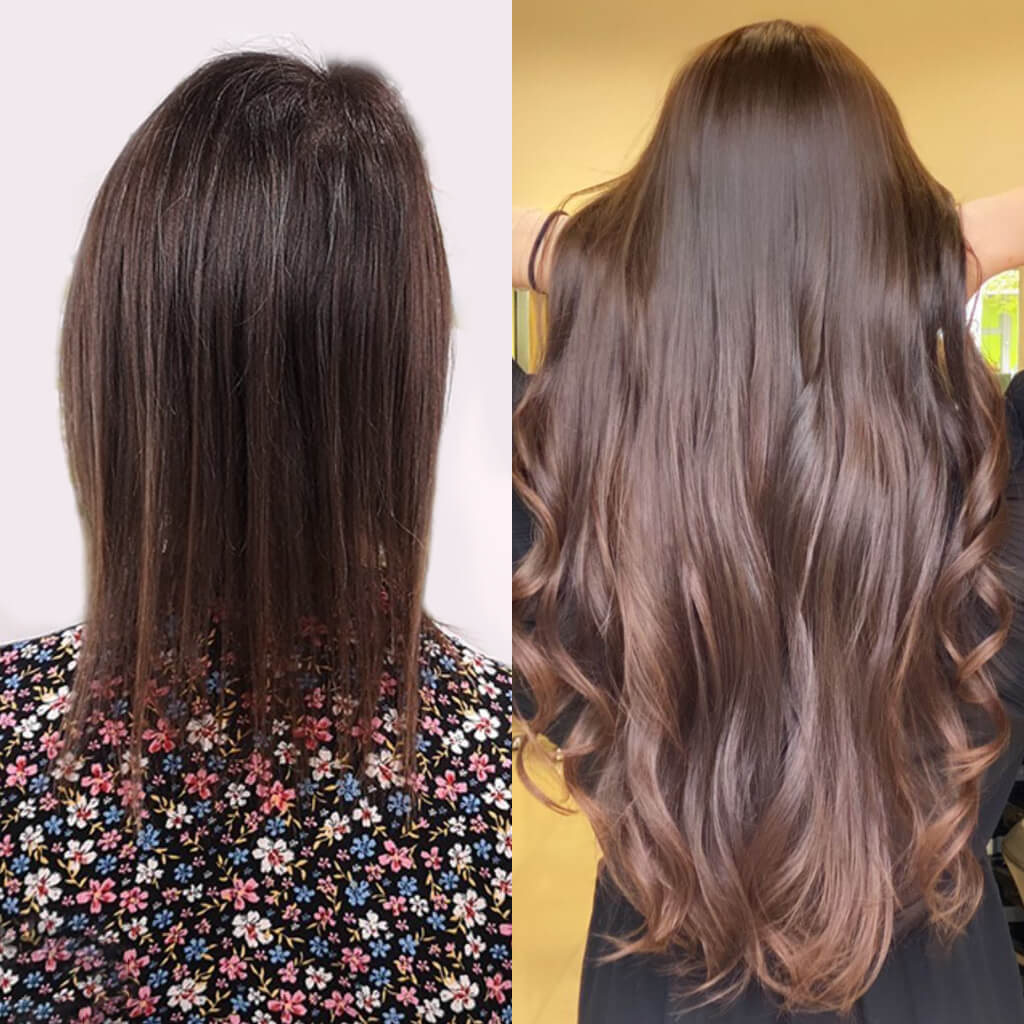
Benefits of halo hair extensions
Halo extensions are some of the most straightforward extensions to install for thin or fine hair.
- Cause no tension to the hair
Halo hair extensions sit on the wearer’s crown with clear wire instead of hanging on the hair strands, so they will cause no tension to natural hair and scalp.
- Easy to wear
With halo hair extensions, the wearer can easily do it herself without the help of a hairstylist.
Halo hair extensions are the handiest hair extensions out there. They can be put on and removed every day and at any moment.
Shop halo hair extensions
Hair extensions are suitable for thin or fine hair but must be appropriately applied
Numerous hairstylists and specialists have different opinions about hair extensions and whether they suit thin or fine hair.
To confirm who’s right and wrong, we did some in-depth studies on these hair extensions and discovered that all hairstylists and hair specialists are correct.
To be objective, we will list the details of how these hair extensions work and how they should be applied to the wearer’s hair; if misused, they will surely damage the wearer’s hair or worsen hair loss.
These hair extensions are Tape-in hair extensions, clip-in hair extensions, and fusion hair extensions.
These hair extensions are suitable for use on thin or fine hair. But must be applied appropriately. Above all, the wearer should always get a qualified and experienced hairstylist to put it on.
Fusion hair extensions
Fusion hair extensions: not standard fusion but micro-fusion.
As mentioned earlier, pulling against the scalp is a no-go in the hair extension universe.
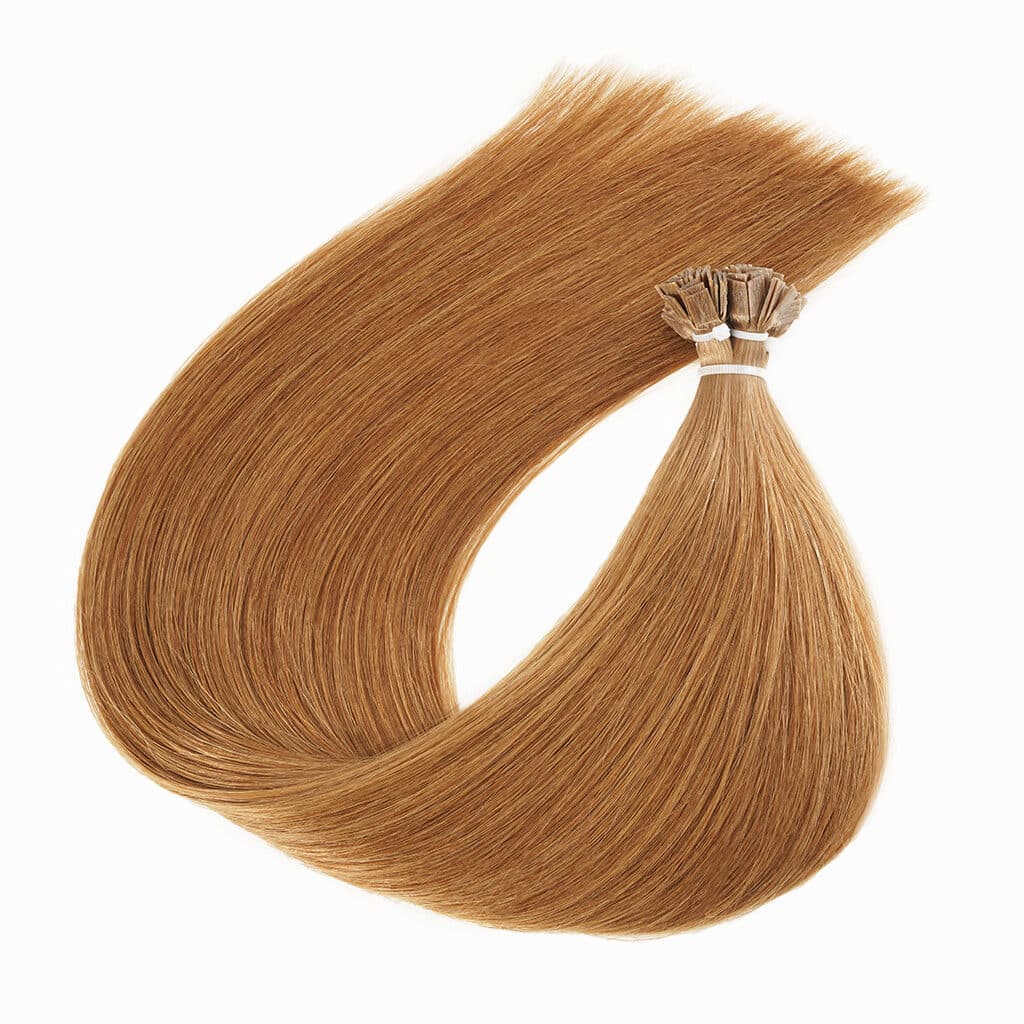
Prevent Fusion Hair Extension from Damaging Fine Thin Hair
- Go for Micro-Fusion Hair Extensions
Standard fusion bonds are 1 gram per bunch, which is too heavy for a single bunch of hair, so we recommend micro-fusion. Some stylists or hair specialists also call them micro-ring hair extensions. But are micro ring extensions good for thin hair?
Each micro-fusion bond is roughly 0.6-0.8 grams per strand, an ideal weight for thin or fine hair strands to avoid pulling and tugging against the scalp and keep the wearer’s natural hair intact.
- Cut a Hair Extension into Micro-Bonds
It is also commonplace for the hairstylist to cut one fusion hair extension into three mini hair extensions, and many hairstylists have been doing that for a long time. Cutting the fusion hair extension bond into small micro-bonds will significantly reduce the overall weight of the hair extension. Each mini hair extension will not pull on the natural hair, resulting in more severe hair loss.
Will the glue and adhesives in the fusion hair extension bond damage the wearer’s hair?
No, it won’t; it is conventionally and technically a wrong belief that fusions can damage hair.
The glue (or bond) is made of keratin, preventing hair from damaging and adhering to the wearer’s hair easily.
Furthermore, most fusion hair extension bonds use user-friendly glue; for example, New Times Hair sticks to Italian glue for the fusion bonds, which causes zero harm to the wearer’s natural hair.
In a word, with top-tier quality fusion hair extensions made at New Times Hair, there’s nothing to do with harmful chemicals or ingredients that could cause any damage to the user’s natural hair.
Will Adhesive in the Fusion Hair Extension Bond Damage Natural Hair?
No, it won’t; it is conventionally and technically a wrong belief that fusion hair extensions will damage natural hair. The glue (or bond) is made of keratin, the same substance that forms our natural hair. When attached, it will fuse perfectly into the natural hair as one.
Furthermore, most fusion hair extension bonds use user-friendly glue; for example, New Times Hair sticks to Italian glue for the fusion bonds, which causes zero harm to the wearer’s natural hair.
With top-tier quality fusion hair extensions made at New Times Hair, there’s nothing to do with harmful chemicals or ingredients that could cause any damage to the user’s natural hair.
Does Heating Fusion Hair Extension Bonds Cause Damage to the Wearer’s Natural Hair?
Yes, they will, but it depends on how. Exposure to high heat will surely change the shape of our keratin strands. Temperatures over 300F will quickly change the hair’s keratin from alpha to beta, resulting in weaker hair that has become less elastic and more prone to damage.
- Invest in a High-Quality Heat Protectant
If you are a stylist, please use heat protectants to prevent hair from being damaged by heat. Start with a high-quality heat protectant to keep moisture in and frizz out.
- Keep the Temperatures between 300 and 350 Degrees
While using a flat iron or a curling iron on keratin-bonded hair extensions, keep the temperatures between 300 and 350 degrees Fahrenheit. The bond can melt or loosen up if the extensions are overheated.
How Are Fusion Hair Extensions Likely to Damage Natural Hair?
Suppose the natural hair strand is too thin in diameter. The glue or adhesive may not fit tightly around the natural hair strand in that case. Hence, the bond is loose, and the extension slips down the natural hair strand, resulting in split natural hair or hair loss.
Fusion hair extensions are also considered the least damaging hair extensions for thin hair. But the wearer must get a professional hairstylist to do it for her. If she wants her boyfriend or husband to do it for her, okay, and the extension may last her only two weeks. So, always ensure a qualified and experienced hairstylist does the installation.
Shop fusion hair extensions for fine thin hair
Clip-in hair extensions
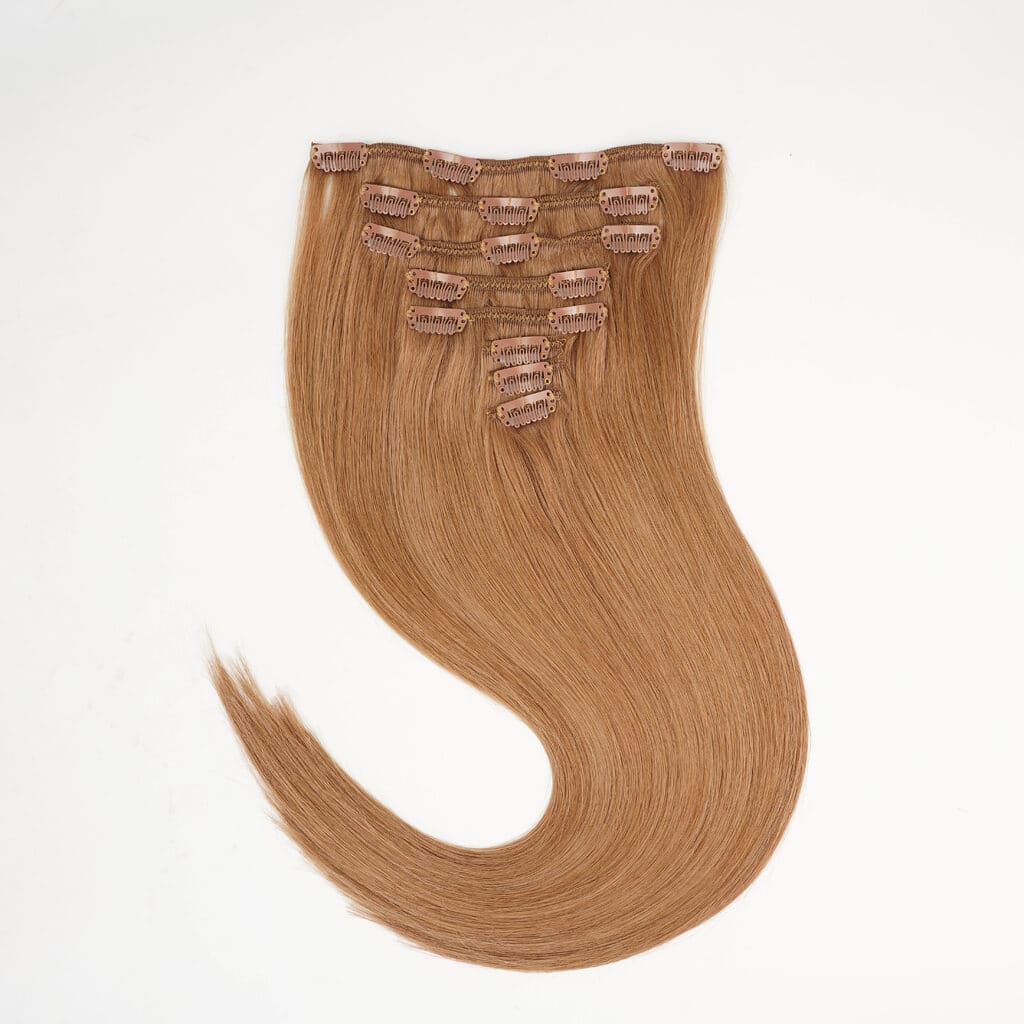
Clip-in hair extensions are handy, but how about frequently putting them on and taking them off? How to put clip in extensions in thin hair?
With clip-in hair extensions, sometimes called clip-in weaves, users can easily attach hair wefts to their natural hair using several tiny pressure-sensitive clips.

A set of clip-in hair extensions consists of various wefts of hair with one, two, three, or four clips in multiple sizes.
Do clip-in hair extensions damage the wearer’s hair?
This topic has been argued about over and over again between hairstylists and salon owners.
- Clip-in hair extensions are handy but can’t be put on and taken off too often.
Unlike single-bunch hair extensions, such as fusion hair extensions, tape-in hair extensions, etc. (which get put on the wearer’s hair bunch-by-bunch), most clip-in hair extensions are one-piece hair extensions that the wearer can put on to cover her entire head, just like halo hair extensions or some traditional wigs.
Clip-in hair extensions are one of the few hair extensions that don’t require the wearer to visit a hairstylist for help. What could cause hair damage to the wearer is the hair extension’s frequent putting on and taking off.
Imagine the wearer has to put it on and take it off eight times a day, and each hair extension could have up to eight clips to grip onto the wearer’s natural hair; surely, keeping doing this will increase the possibility of hair damage.
- Avoid the frequent use of clip-in hair extensions.
Like halo or other full-head hair extensions, clip-in hair extensions are generally heavier than partial hair extensions or bunch-by-bunch hair extensions. If clip-in is a must for your customer and she’s so into the convenience of using it, advise her to use it sparingly or just for special occasions.
Remember that clip-in hair extensions, unlike toupees or some men’s partial hairpieces, are not hair loss savers; wearers buy them purely to add volume and glam. So it doesn’t hurt to preserve it well for important occasions. Not only will it keep her natural hair intact and healthy, but it will also help the extension last longer.
Shop clip-in hair extensions for fine thin hair
Micro-link hair extensions
How about micro-link (cold fusion) hair extensions?
Also known as microbeads, microtubes, or cold fusion, micro-link hair extensions often combine hair strands to attach a micro-link hair extension.
Putting on micro-link hair extensions and removing them is time-consuming. It involves intensive pulling and tugging against the scalp, imposing tremendous pressure on the wearer’s hair.
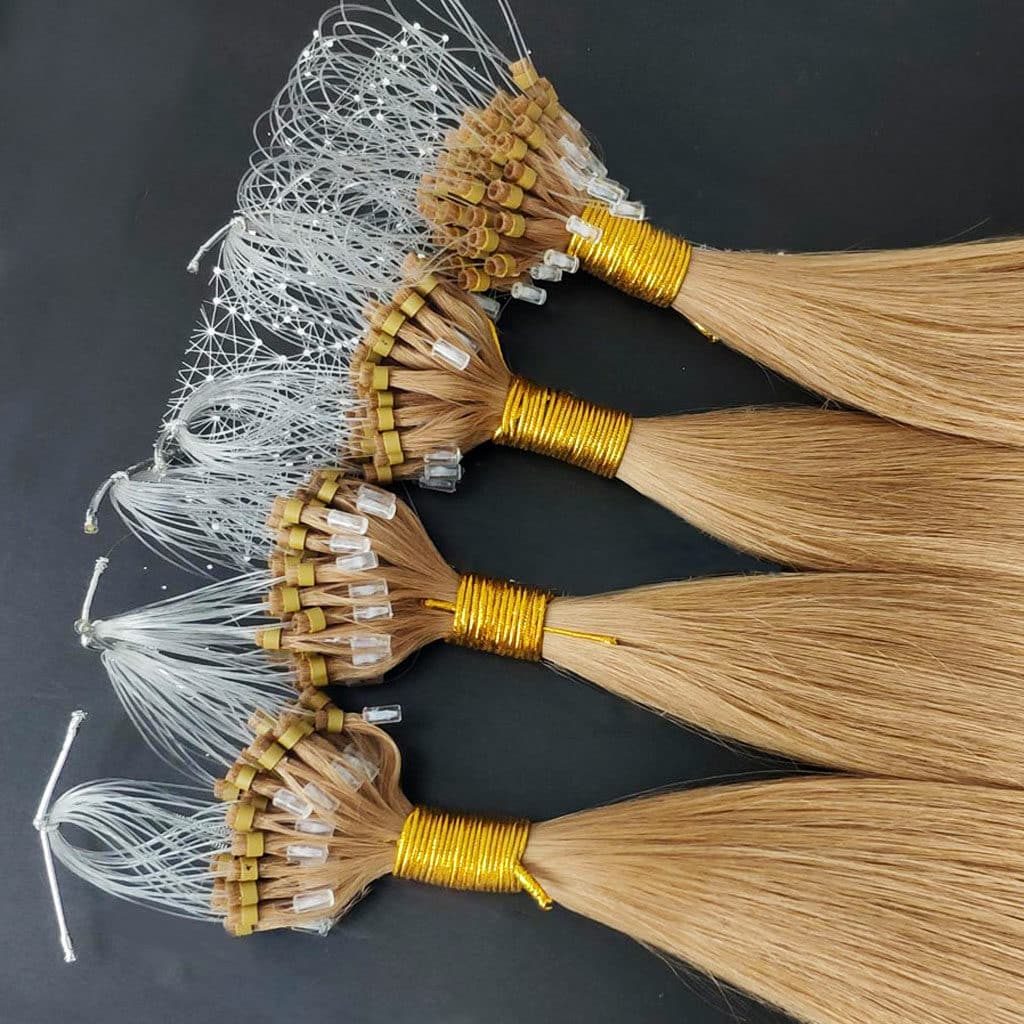
However, that doesn’t give enough excuses to suggest that the wearers should avoid using micro-link hair extensions.
As we have repeatedly stressed, getting a qualified, experienced stylist is a must!
The advantages of micro-link hair extensions for wearers with thin or fine hair
Micro-link hair extensions allow tons of styling flexibility and continual shampooing and treating of the wearer’s scalp, unlike other methods such as sewn-in weaves or glued full wigs.
- Lightweight
Micro-link hair extensions are lightweight and do not weigh down the wearer’s hair or break it.
- Causing Less Tension to the Hair and Scalp
Another bonus is that micro-beads are lined with silicone, holding on to the hair without causing unnecessary friction. So they won’t easily skip out on any braiding, causing hair loss or traction alopecia.
- Help the Natural Hair Grow
Micro-link or cold-fusion extensions are as healthy as wearing the wearer’s natural hair with proper care. However, advise your customer to keep micro-link extensions away from their hairline, as this is a sensitive area of the scalp that can irritate easily when wearing hairstyles like high ponytails.
Shop micro-link hair extensions for fine thin hair
Tips and Tricks for Hiding Hair Extensions for Fine or Thin Hair
We want wearers to look as natural and authentic as possible. No wearers wish their extensions to poke out of their natural hair and reveal their secret tricks.
- Never Attach Hair Extensions too Close to the scalp.
Never attach hair extensions too close to the wearer’s scalp, especially with single-bunch hair extensions for thin hair, as this will obstruct the growth of the wearer’s natural hair and cause the hair extension bonds to poke out of the natural hair covering them. Ideally, attach the hair extensions one inch from the roots.
- Never Attach too Close to the Sides.
Attaching hair extensions too close to the sides will cause the bonds or wefts to easily expose. For example, when the wearer flaunts her hair to one side or puts on a side swoop, others may easily see her bonds or wefts. Install the hair extensions two or three fingers away from the ears to ensure the bonds are well-hidden.
- Get a Professional, Trained Hairstylist
Once again, I am obliged to emphasize the importance of finding a professionally trained hairstylist to install hair extensions. Individuals need help to achieve professional results. It is always crucial for the wearer to find a professionally trained and experienced hairstylist to handle the installation process.
Final words
How do I define the best hair extensions for thin hair and fine hair? There’s no exact answer to that.
The bottom line is:
- Try to get hair extensions to be installed bunch by bunch, which are lightweight to fine, thin hair. To do this, we have fusion hair extensions, micro-link hair extensions, and hair extensions with tips of various shapes.
- Also, no toxic chemicals are applied in the most commonly used hair extensions. Only when washing off glue or adhesives with chemicals like alcohol may irritate or dry the scalp and damage the natural hair.
- Suppose the wearer with thin or fine hair prefers to use a halo, clip-in, or hand-tied weft hair extensions, and her natural hair is too thin to cover up the beads or clips. In that case, she’d better choose hair extensions similar to her natural hair. The hair needs to mimic her natural hair in color and texture, so they may blend well and create an illusion that she’s not wearing any hair extensions.
Always remember that the wearer must get a qualified and experienced hairstylist to do the hair to avoid damage. The only hair extensions the wearer can put on herself are clip-in hair extensions, halo hair extensions, and ponytail hair extensions.
For any questions about choosing or using your hair extensions, comment or contact us at info@newtimeshair.com. We will help you sort them out in no time!
Shop our store today for the best human hair extensions available.
